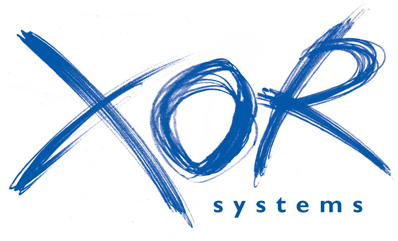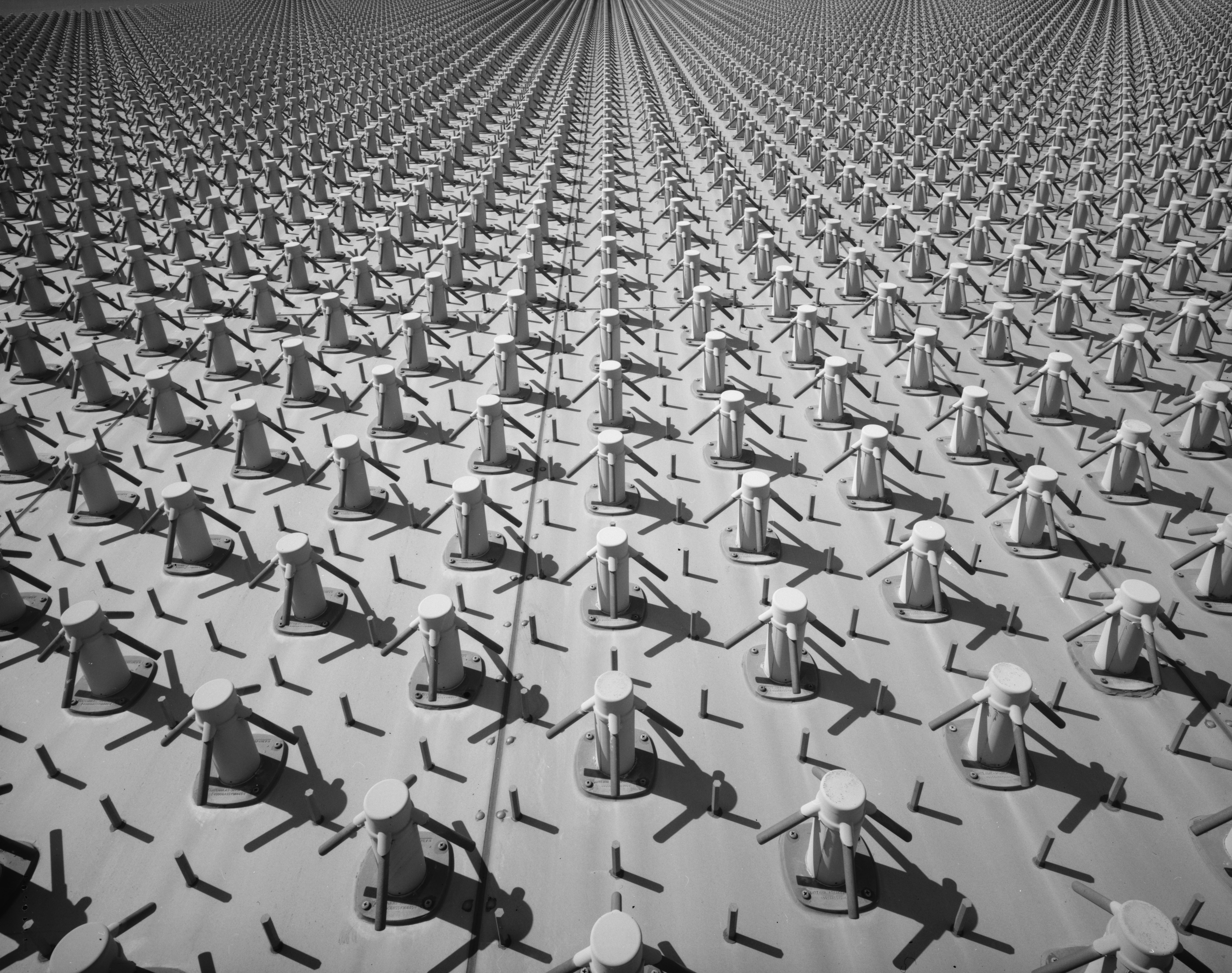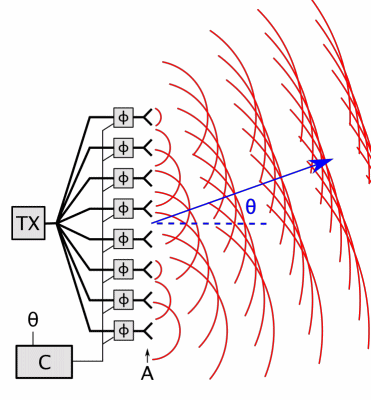Phased arrays 01-06-2024
Phased array antennae have transformed the fields of radar systems, satellite communications, and wireless networks in recent years. Their beam steering and ability to engage with multiple targets simultaneously have enabled advancements in various fields. The conventional type of radar is one with a rotating scanner. These can be seen, for example, at airports and on Royal Navy vessels, a banana shaped disk spinning rapidly. Phased array antenna are distinctive because they don't rotate, they are a fixed flat plane. Actually, some Navy ships do have rotating flat planes, but that is to ensure adequate coverage. The panel is itself flat and can control the beam.
A phased array antenna is a system comprised of an array of individual antenna elements operating collectively to generate a focused and controllable beam of electromagnetic waves. It utilises principles of wave interference and phase manipulation to govern the beam's shape.
The antenna elements making up the array are arranged in a regular uniformly spaced pattern, as shown above. Each element is an identical antenna unit with the hardware required to control its frequency and phase relative to the other antenna elements.
Through this manipulation of the phase and frequency across the array of elements, it becomes possible to achieve controlled constructive and destructive interference which allows precise control of the shape produced by the interference. By altering the phase relationships between the antenna elements, the primary lobe of the beam can be directed toward a specific angle in space while minimizing side lobes, or several small lobes may be created and directed at several targets simultaneously.
The process of coordinating the phase shifters to achieve the desired beam direction is known as beamforming. Phased array antennas offer notable advantages over traditional single-element antennas. They enable electronic beam steering without requiring physical repositioning of the antenna, thus facilitating swift beam movement and more precise tracking capabilities while having the increased reliability of a system with no moving parts. Additionally, phased arrays can support multiple simultaneous beams, making them conducive to efficient multi-target tracking or communications.
Applications
Radar Systems:
Phased array antennas are extensively used in radar systems for military, aviation, and weather applications. Their ability to rapidly steer the beam in different directions allows for efficient scanning of the surrounding airspace or terrain. Phased array radars offer benefits such as high angular resolution, fast target tracking, electronic beam steering, and simultaneous tracking of multiple targets.
As an example of the difference this makes over conventional rotating radar - rotating radar hasa problem with fixed objects in its view, such as wind turbine farms in the North Sea. They create a shadow effect, and it impossible to see behind the turbines. Phased array radar is able to peer behind the wind turbines.
Satellite Communications:
Phased array antennas are employed in satellite communication systems to establish high-capacity links between satellites and ground stations. By electronically steering the beam, they can track satellites as they move across the sky, ensuring a continuous and stable communication link. Phased arrays enable efficient signal transmission, reception, and tracking for applications such as internet connectivity and global communication networks.
Wireless Communication:
Phased array antennas are increasingly used in wireless communication systems, particularly in 5G. They enable beamforming techniques that can dynamically steer signals towards specific users or devices, improving signal quality, coverage, and capacity. 5G has much shorter range than 4G and suffers from problems in cities with tall buildings. This is solved by the bean-forming techniques. Phased arrays enhance the efficiency of wireless networks by reducing interference, extending coverage areas, and supporting massive multiple-input multiple-output (MIMO) systems.
Radar Systems:
Phased array antennas are extensively used in radar systems for military, aviation, and weather applications. Their ability to rapidly steer the beam in different directions allows for efficient scanning of the surrounding airspace or terrain. Phased array radars offer benefits such as high angular resolution, fast target tracking, electronic beam steering, and simultaneous tracking of multiple targets.
As an example of the difference this makes over conventional rotating radar - rotating radar hasa problem with fixed objects in its view, such as wind turbine farms in the North Sea. They create a shadow effect, and it impossible to see behind the turbines. Phased array radar is able to peer behind the wind turbines.
Satellite Communications:
Phased array antennas are employed in satellite communication systems to establish high-capacity links between satellites and ground stations. By electronically steering the beam, they can track satellites as they move across the sky, ensuring a continuous and stable communication link. Phased arrays enable efficient signal transmission, reception, and tracking for applications such as internet connectivity and global communication networks.
Wireless Communication:
Phased array antennas are increasingly used in wireless communication systems, particularly in 5G. They enable beamforming techniques that can dynamically steer signals towards specific users or devices, improving signal quality, coverage, and capacity. 5G has much shorter range than 4G and suffers from problems in cities with tall buildings. This is solved by the bean-forming techniques. Phased arrays enhance the efficiency of wireless networks by reducing interference, extending coverage areas, and supporting massive multiple-input multiple-output (MIMO) systems.
As technology continues to improve, phased array antennas are poised to become increasingly vital in a world where the available spectrum space is limited.
With the exponential growth of connected devices and the increasing demand for internet connectivity, efficient and focused communications are paramount. Phased arrays offer a promising solution by enabling focused communication channels in narrower beams, that reduce spectral clutter and enable maximizing the utilization of available frequencies. This enhanced spectral efficiency will be crucial in addressing the ever-increasing number of connected devices that rely on the Internet. By harnessing the power of phased arrays, the growing demands of our interconnected can be met while mitigating the challenges posed by limited spectrum resources.


